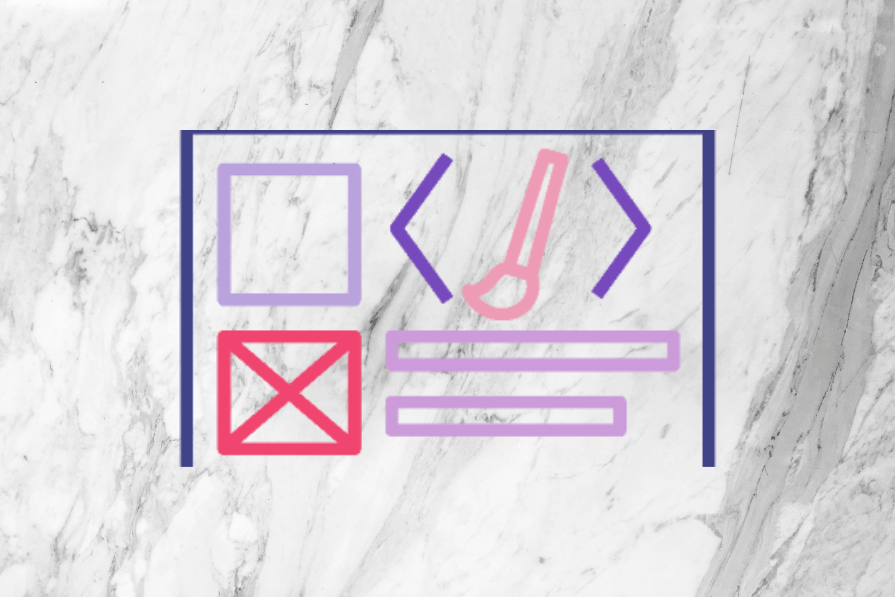On this page Something not working? Report broken page
tl;dr: Overfitting happens when solutions don’t generalize sufficiently and is a hallmark of poor design. Eigensolutions are the opposite: solutions that generalize so much they expose links between seemingly unrelated use cases. Designing eigensolutions takes a mindset shift from linear design to composability.
In product literature, the design process looks a bit like this: This works great with the kinds of transactional processes (marketplaces, social media, search engines, etc) most product literature centers around, but can fall apart when designing creative tools (developer tools, no-code tools, design tools, languages, APIs etc.), as there are fundamental differences between the two:
In transactional processes, users have clearly defined goals, and the task is highly specialized (e.g. “Go to work”, “Order takeout”, “Find accommodation for my upcoming trip”) and can often be modeled as a linear process.
In creator tools, use cases vary wildly, goals are neither linear, nor clearly defined, and may even change throughout the session. Creator tools typically ship knowingly addressing only a percentage of their key use cases — otherwise they would never ship at all. It’s all about balancing UX, use case coverage, and design/implementation effort.
In end-user programming we talk about the floor and the ceiling of a tool: The floor is the minimum level of knowledge users need to create something useful. The ceiling refers to the extent of what can be created. Some people also talk about wide walls: the range of things that can be made (i.e. how domain specific the tool is). I think that vocabulary generalizes more broadly to creator tools, and can be a useful UX metric.
Programming languages tend to have high ceiling, but also a high floor: You make anything, but it requires months or years of training, whereas domain specific GUI builders like Google Forms have a low floor, but also a low ceiling: Anyone can start using them with no training, but you can also only make very specific kinds of things with them.
A product that combines a low floor with a high ceiling is the unicorn of creator tools. Therefore, most product work in creator tools centers around either reducing the floor (making things easier), or increasing the ceiling (making things possible). Which one of the two takes priority depends on various factors (user research, product philosophy, strategy etc.), and could differ by product area or even by feature.
In creator tools, use cases tend to accumulate at a much faster rate than they can be addressed, especially in the beginning. Therefore we end up with what I call a “use case backlog”: a list of use cases that are within scope, but we cannot yet address due to lack of resources, good solutions, or both. The more general purpose and the more ambitious the tool is, the higher the rate of accumulation, since the pool of use cases is naturally larger. Pain points get processed into use cases, which accumulate in the use case backlog
Unlike the linear design process of transactional processes, the design process for creator tools often consists of matching use cases to solutions, which can happen before, during, or after idea conception: A product may include both transactional processes and creator tools, e.g. Instagram is a social media platform (transactional) with a photo editor (creator tool). Although these tend to be more domain-specific creator tools, which are less good examples for the concepts discussed here.
Shishir Mehrotra (of Coda) wrote about the importance of “Eigenquestions” when framing problems, a term he coined, inspired from his math background: the eigenquestion is the question where, if answered, it likely answers the subsequent questions as well. This inspired me to name a symmetrical concept I’ve been pondering for a while: Eigensolutions. The eigensolution is a solution that addresses several key use cases, that previously appeared unrelated. An eigensolution is the polar opposite of overfitting. Overfitting happens when the driving use cases behind a solution are insufficiently diverse, so the solution ends up being so specific it cannot even generalize to use cases that are clearly related. Overfitting is one of the worst things that can happen during the design process. It is a hallmark of poor design that leads to feature creep and poor user experiences. It forces product teams to keep adding more features to address the use cases that were not initially addressed. The result is UI clutter and user confusion, as from the user’s perspective, there are now multiple distinct features that solve subtly different problems.
This is all nice and dandy, but how do we design and ship eigensolutions? Do we just sit around waiting for inspiration to strike? Well, we could, but it would be a pretty poor use of resources. 🙂 Instead, it takes a mindset shift, from the linear Use case → Idea → Solution process to composability. Rather than designing a solution to address only our driving use cases, step back and ask and ask yourself: can we design a solution as a composition of smaller, more general features, that could be used together to address a broader set of use cases? In many cases the features required for that composition are already implemented and are just missing one piece: our eigensolution. In other cases composability may require more than one new feature, but the result can still be a net win since these features are useful on their own and can ship independently.
A composability mindset requires being aware of pain points and use cases across many different product areas. This becomes harder in larger organizations, where product teams are highly specialized. It’s not impossible, but requires conscious effort to cross-polinate all the way down, rather than completely depending on higher levels of the hierarchy to maintain a bird’s eye view of the product.
It’s also important to note that it’s a spectrum, not a binary: overfitting and eigensolutions are just its two opposite ends. Eigensolutions do not come along every day, and do not even exist for all problems. While it’s important to actively guard against overfitting by making sure solutions are validated by many diverse use cases, going too far the other side and chasing a general solution for every problem is also a poor use of resources. Instead, I think a happy medium is to try and be on the right side of the spectrum: Good design is only part of the work; but without shipping, even the most well designed feature is a pointless document.
Contrary to what you may expect, eigensolutions can actually be quite hard to push to stakeholders: Due to their generality, they often require significantly higher engineering effort to implement. Quick-wins are easier to sell: they ship faster and add value sooner. In my 11 years designing web technologies, I have seen many beautiful, elegant eigensolutions be vetoed due to implementation difficulties in favor of far more specific solutions — and often this was the right decision, it’s all about the cost-benefit.
Eigensolutions tend to be lower level primitives, which are more flexible, but can also involve higher friction to use than a solution that is tailored to a specific use case. In many cases, layering can resolve or mitigate both of these issues.
My north star product design principle is “Common things should be easy, complex things should be possible” (paraphrasing Alan Kay — because common things are not always simple, but it’s common things you want to optimize for), which in essence is another way of aiming for low floors and high ceilings. Eigensolutions tend to be lower level primitives. They enable a broad set of use cases, but may not be the most learnable or efficient way to implement all of them, compared to a tailored solution. In other words, they make complex things possible, but do not necessarily make common things easy. Some do both, in which case congratulations, you’ve got an even bigger unicorn!
You can skip this section. 🙂 However, this is one of the rare times in life where we can have our cake and eat it too. Instead of implementing tailored solutions ad-hoc (risking overfitting), they can be implemented as shortcuts: higher level abstractions using the lower level primitive. Done well, shortcuts provide dual benefit: not only do they reduce friction for common cases, they also serve as teaching aids for the…
Source link























